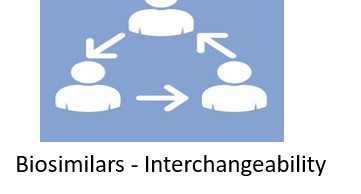
The FDA has recently published a draft guidance for establishing interchangeability, which will allow a biosimilar drug to be used without permission from a physician. This guidance is very complex and has many facets.
We attempted to create a simplified version of it and highlighting some of the key points. The reader is requested to review the guidance in detail but for those who like the cliff notes here are the highlights.
Product Complexity – The extent of clinical requirements will depend on product complexity
· Functional and structural complexity
· Knowledge of the mechanism of action
· Single vs multiple biological pathways
Product Immunogenicity – The requirement and the extent of the study will depend :
· Historical evidence of immunogenicity
· The level of detrimental response and impact
Totality of evidence will be based on the structural complexity of protein
- A. Low complex structure WITH low immunogenicity
- B. High complex structure WITH High immunogenicity
If A then switching study maybe sufficient
If B – Switching study and post marketing surveillance maybe required
Post marketing study must establish scientific end points with the understanding of PK, PD and immunogenicity level.
Switching Study – Required to support interchangeability for all products and should meet criteria :
- Required two or more alternating exposure
- Not required for products only administered once
- Need to address PK, PD, Immunogenicity and Safety
- Sample size based on PK ( AUCtau or Cmax )
- Drop rate must be taken into consideration as key design criteria
- Lead in period should be design as part of the study
- · Minimum of three switches
- “Number and duration of switches: The number and duration of switches between the 406 reference product and the proposed interchangeable product should take into 407 consideration the clinical condition to be treated, the therapeutic dosing of the product, 408 and the duration of the exposure interval to each product that would be expected to cause 409 the greatest concern in terms of immune response and resulting impact on safety and 410 efficacy, if any.”
· Intensive sampling in the last interval
- “To capture the full PK profile, intensive PK 428 sampling should be performed during the last switch interval following the dose after 429 which at least three half-lives of the reference product have elapsed”
· Trough PK must be collected after each switch
· Timing of PD and Immunogenicity must be justified
· BE 80-125 with 90% CI as criteria
· Integrated design allowed and require randomization of subjects after establishing biosimilarity end pts.
o “the subjects in the reference product arm should be re-randomized in the second part of the study to continue to receive the reference product (non-switching reference product arm) or to switch to the proposed product (switching arm) as described in section VI.A.2.a of this guidance. FDA recommends continuing the proposed product arm (non-switching proposed product arm) from the inception of the study, through the duration of the switching portion of the integrated study, to the completion of the study”
· Switching studies are recommended in patients and if proposed in healthy must be justified and reviewed with agency prior to submission of protocol
· Studies must be conducted in conditions similar to the reference product
· Route of administration in most sensitive route subcutaneous recommended
Extrapolation
- Must establish interchangeability first
- Scientific justification for other indications required
· Reference Product
- US reference product ONLY
Simulated human factor studies
- Required to establish interchangeability
- FDA recommends the use of error rate ( ER(ip) vs ER(rp))
- Three step threshold analysis recommended for evaluating differences in presentation. (1) Labeling (2) Comparative task analysis and (3) Physical comparison
o Minor differences allowed after the completion of threshold study
· Post Marketing
- Pharmacovigilance program required.
This summary is not meant to be comprehensive and only highlights key points of the draft guidance. Also remember this is a draft and FDA will be receiving feedback and will likely publish a final version at a later date.
As always I welcome your comments and you can contact me at [email protected] or [email protected]